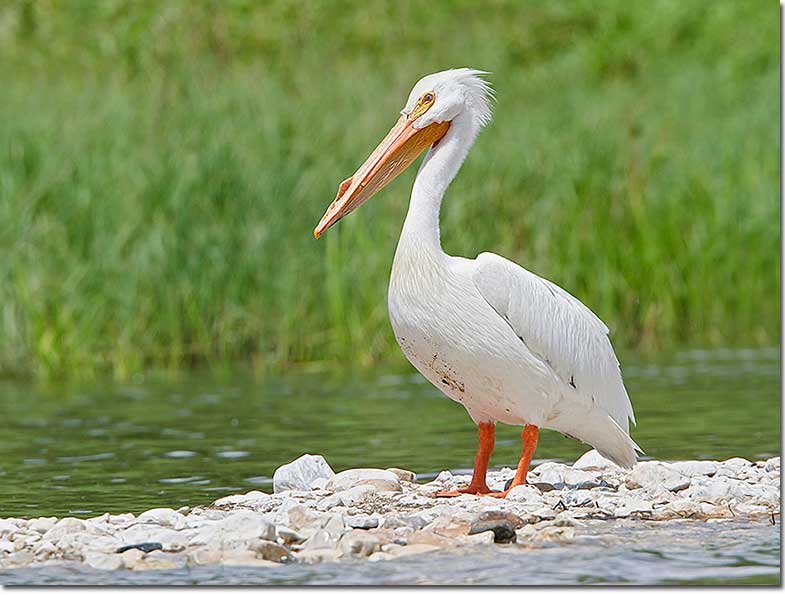
Two pelican species are found in the United States. The American White Pelican and the California Condor have the longest wingspan of any North American species, up to 108 inches.
What you should know:
- The Brown Pelican is primarily a coastal species and almost always seen in salt water.
- The American White Pelican typically nests near fresh water but can be seen in coastal areas, especially in the winter.
- Brown Pelicans feed by diving into the water.
- American White Pelicans often feed in groups, “herding” fish into smaller areas where than can be more easily caught.
- The American White Pelican and the California Condor have the greatest wingspan of any North American species.
On this page
American White Pelican
The American White Pelican is a large swimming bird with a very large and long orange beak. A large pouch of orange skin is present on the lower bill and is used for foraging. The pelican’s plumage is white, with black flight feathers visible when its wings are extended.
American White Pelicans may be strange looking, but are well adapted for capturing their favored prey, mainly fish of little interest to sport fisherman, which they scoop from shallow water. American White Pelicans often attempt to steal fish from other pelicans or from gulls or cormorants.
With their large size, American White Pelicans are seldom preyed upon as adults, and have been known to live over 26 years in the wild. Food shortages and human disturbance are cited as occasional problems for pelican populations.
It would be difficult to confusing a sitting or swimming American White Pelican with any other species. Very large, heavy body. Reddish feet and legs. long bill.
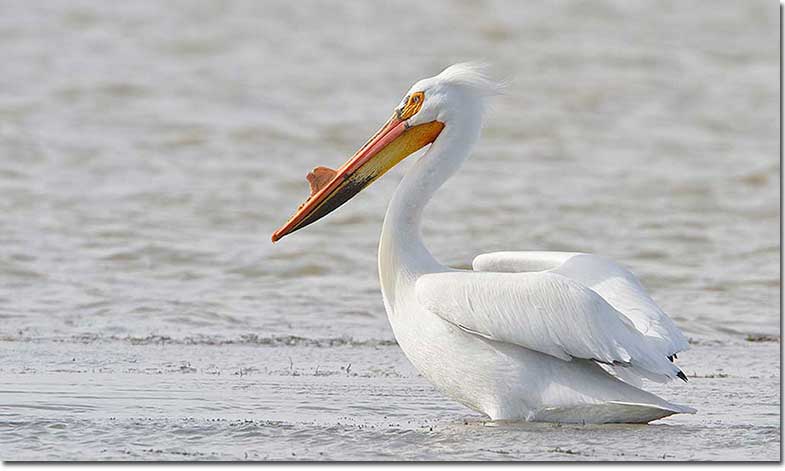
The knob on the bill is largest during the breeding season.
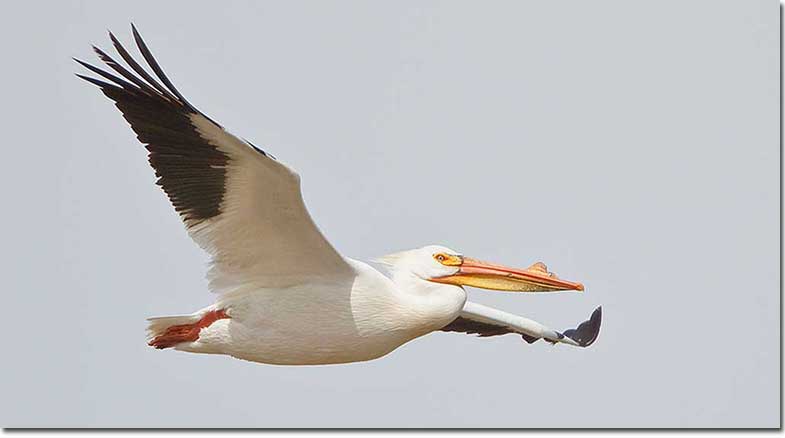
American White Pelicans have a wing span of 9 feet!. They are often seen soaring in large flocks. As they twist and turn they can almost become invisible, despite their large size. Photograph © Glenn Bartley.
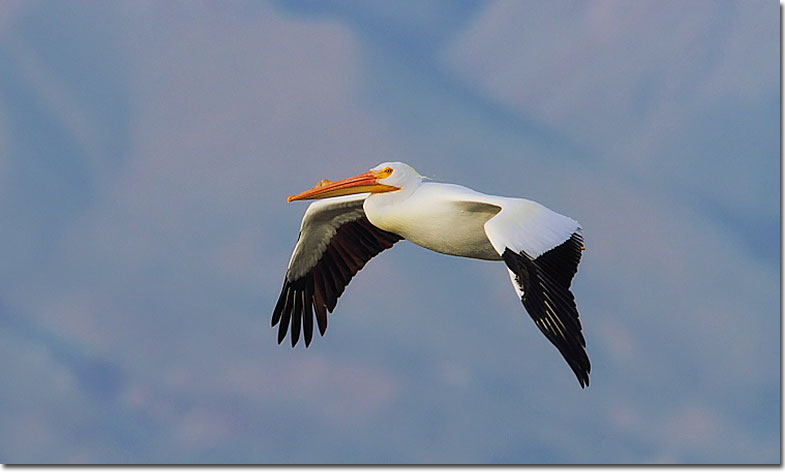
Wing tip and trailing edge of wings black. Photograph © Steve Wolfe.
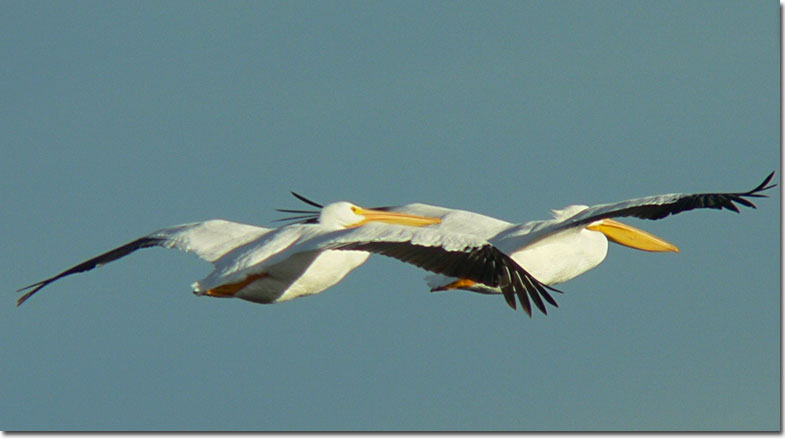
The White Ibis is also largely white with similar black markings on the wings. They could be confused with a American White Pelican if seen at a distance. Photograph © Steve Wolfe.
Brown Pelican
The Brown Pelican is familiar to coastal residents of the western and southern U.S. for its spectacular plunge-diving foraging technique in which it flies over the ocean looking for fish and suddenly plunges head-first into the water to capture its prey. Webbed toes make Brown Pelicans good swimmers, though they do not swim underwater.
Brown Pelicans have white necks, yellow heads, and grayish-brown bodies.
In their breeding plumage they have white sides and back of the neck turn a dark, rich, reddish-brown.
When they are searching for food, Brown Pelicans scout for fish from the air and dive head-first into the water once they catch a glimpse of their prey.
Amazingly, Brown Pelicans dive into the water from heights up to 65 feet. They’ll twist and tuck their body before impact to protect their esophagus and trachea. As a Brown Pelican dives into the water, the pouch on its throat will expand to trap fish – it can fit up to 2.6 gallons of water.
Very social birds, Brown Pelican nest in colonies numbering up to 10,000 birds. For several decades, colonies were much smaller because the population had been much reduced by pesticide use. A ban on certain pesticides has allowed the population to recover dramatically.
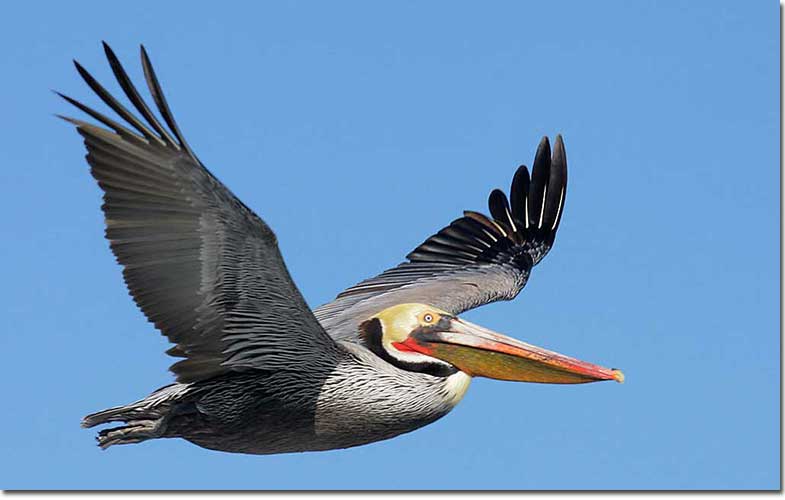
The Brown Pelican is large and grayish-brown, with a yellowish head, a long neck, and very long bill. Heads and bill more colorful during breeding season. Photograph © Tom Grey.
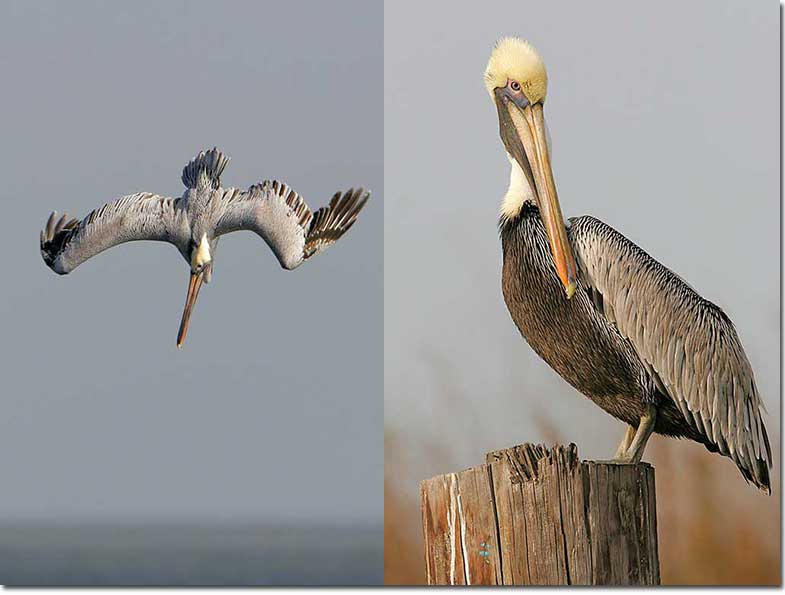
Hindneck is brown during the breeding season and whitish in the nonbreeding season. Photograph © Greg Lavaty.

Brown Pelicans feed by folding their wings and knifing into the water to grab a fish. Photograph © Steve Wolfe.
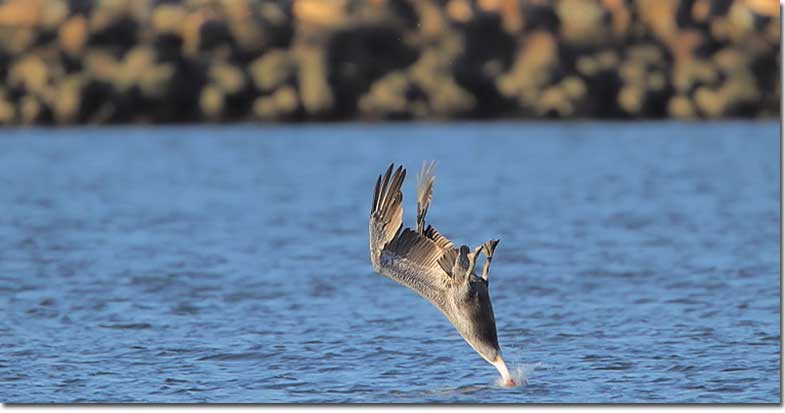
Photograph © Steve Wolfe.
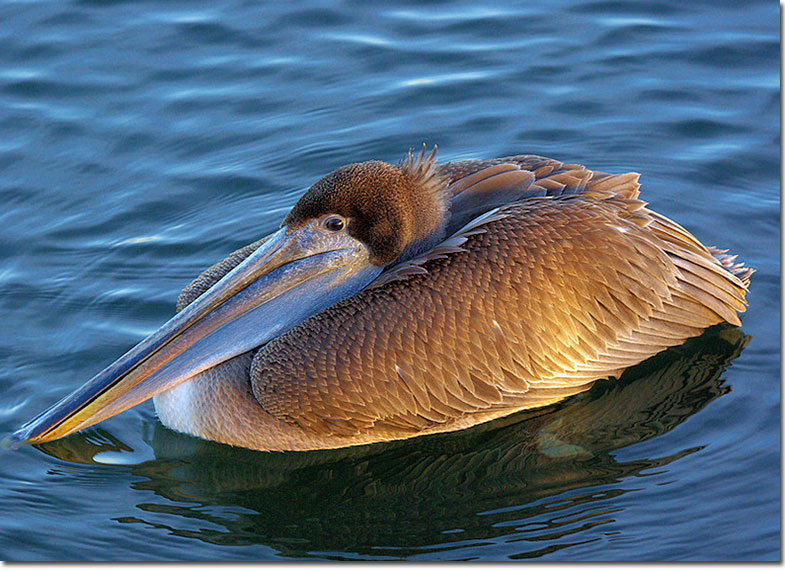
Juveniles have dark heads. Photograph © Steve Wolfe.

